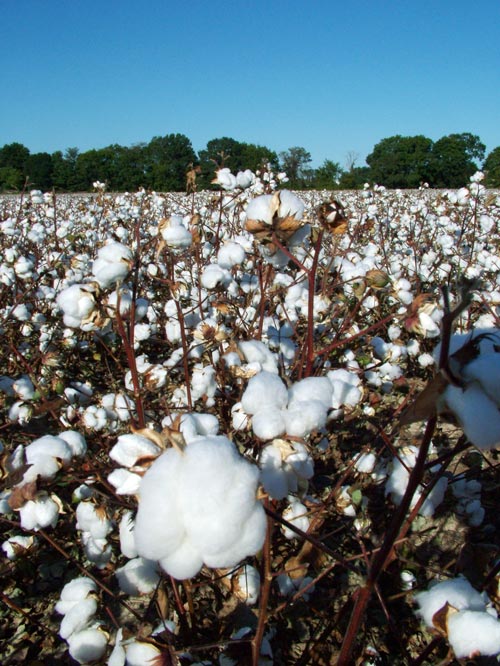
Drought a big worry as cotton planting begins
How many acres of cotton will be planted in 2011 when all is said and done? Analysts say economics and weather will play a big role.Tight supplies in old crop cotton are a bullish for new crop cotton.Fundamentals can change in a hurry. Producers should consider putting a floor under cotton prices at between $1.30 and $1.40 a pound.

Cotton acreage estimates may push the markets up and down as planting season nears, but lingering dry weather across the Cotton Belt could have a much bigger impact on the market in the longer term, according to Texas A&M Extension economist John Robinson, speaking at the Ag Market Network’s April 12 teleconference.
USDA’s March 31 Prospective Plantings report was a surprise to many, projecting cotton plantings at 12.56 million acres of upland and Pima. The market reacted fairly strongly with new crop cotton prices moving to just under $1.40 per pound.
Robinson thinks cotton acreage may end up a couple of percentage points higher than March projections.
“How much acreage is actually planted is a matter of economics and weather. The average change from March estimates and what actually is planted in June is about 4 percent up or down. I would expect that the final number will be higher in that when we have dry weather in Southwest, we tend to have more plantings, something pushing 13 million aces would be all I would expect. But even if the number goes higher, there is no indication that actual bales will be higher because of the dry weather.”
USDA’s April 8 World Agricultural Supply and Demand Estimates confirmed very tight and bullish conditions in old crop cotton, Robinson noted. “We did see indications of higher production in Brazil, but this was more than offset by forecasted reductions in other parts of the world. The result was a decrease in production which combined with an increase in mill use is a price supporting scenario.
“For new crop cotton, the implication is that the carryin may be much smaller, unless there is a decline in foreign consumption between now and July.”
Weather continues to be a big concern for U.S. cotton acres and production, noted Robinson. Exceptionally dry weather was continuing to hang over much of the U.S. cotton-producing region at the time of this writing.
“Extreme drought conditions are spread from southeastern Arizona to the Mississippi River. Most of the reporting districts in Texas are reporting 90 percent of their acreage in the very short category in regard to topsoil moisture. That’s bad for emerging crops and for crops yet to be planted. We’re in a very iffy situation.
“It’s reasonable to expect lower yields and higher abandonment. Until we have a clearer picture, I would expect new crop futures to remain high and volatile. The likely range of the December contract is between $1.20 and $1.50 for the next couple of months. The extremes could be a dollar at the lowest to a $1.80 at the highest.”
Robinson pointed out that while the drought has grabbed headlines for the moment, “the future outcome is still uncertain and is complicated. As bad as things look with the drought right now, we could all be very surprised with the crop outcome. It could be better than we expect. In 2006, we had similar conditions and projections of tight stocks, but it started raining in August and we ended up with average yields of over 800 pounds.”
Another scenario might be a poor crop in the United States, with good crops elsewhere around the world, combined with a flattening out of consumption.
“We could see a situation where we have tight stocks, our futures markets are getting pumped up by speculative buying and leaving the real cash market behind. Our exports would wither away and prices could come crashing down.
“We have to be mindful of what is going on in the rest of the world. A lot bears are watching closely. We need to keep an eye on the next WASDE report and USDA’s June 30 planted acreage report.”
Pricing cotton is very important, noted Carl Anderson, professor Extension specialist emeritus. “The deadline for entering your cotton in organized pools has probably already passed for most. But take a new look at the marketing associations. Producers need to get some kind of floor in at a reasonable cost. We’d like to see the floor at somewhere between $1.30 and $1.40 on as much as 50 percent of the crop. Don’t overlook the electronic marketing like The Seam. It’s very efficient.”
O.A. Cleveland, professor emeritus, Mississippi State University, does not believe higher cotton prices are resulting in demand destruction for cotton. “We are still seeing cotton apparel moving off the shelves. I’m just not seeing a consumption problem.”
About the Author(s)
You May Also Like





